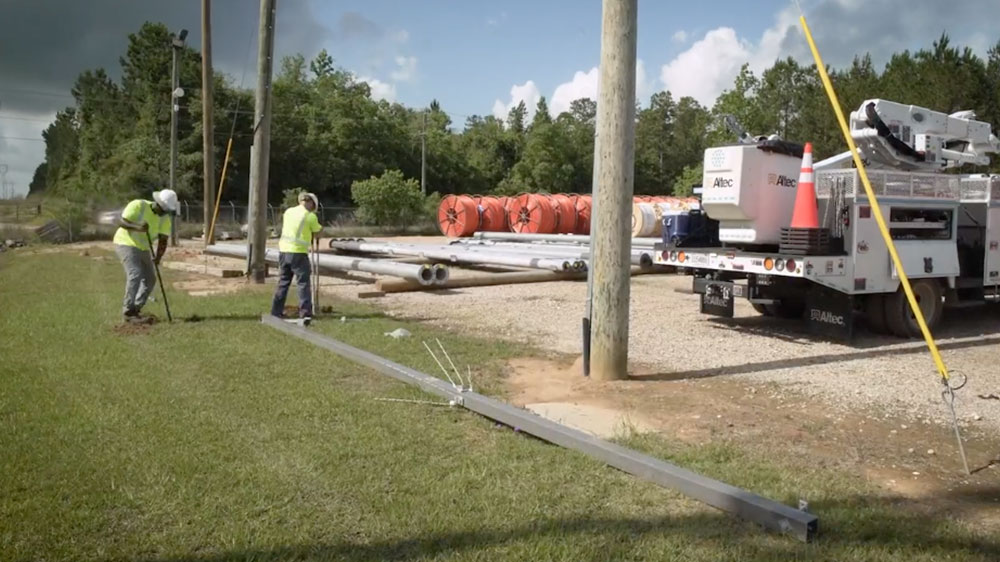So we’re here at Baldwin County Spanish Fort, where the Baldwin team are getting ready to set up some of the temporary disaster recovery poles. Right now there’s a challenge. Mississippi Noah did it in a very short timeframe and they spanned 72 feet. I’m being told that we’re going to go for a record and hit that 75 to 80 foot span, and not only they’re going to do a larger span, they’re going to do it quicker and they’re going to do it more efficiently. Let’s see what these guys are made of. Come on.
These poles kind of came out of a hurricane, Michael, we had majority of our network above ground in Panama City, and after the hurricane came through, it eliminated most of the vertical structures that were on ground. So we were having to tie to trees, lay the fiber on the ground, and in doing so, we were taking hits at the beginning. Every hour and a half we were taking a cut. What we discovered is if we could have gotten that fiber off the ground, we may have prevented multiple cuts in single locations. As the utilities were coming in and trying to place those vertical structures, they were cutting our cables, they were hitting our fiber, they were also destroying our underground. And in that case, we had to restore that underground. Having these temporary poles, we would’ve also been able to do aerial solution for those tie-ins so that we could get the network back up and running.
The temp poles are unique in the sense that we’ve developed them out of lightweight structural fiberglass. They weigh about 35 pounds of peace. So when you start thinking about having to trailer those or throw those in the back of a truck, it makes it much easier to get to site and set those on the ground and actually start erecting the poles. You’re talking about a pole system that is minimally invasive, that we’re not having to do a direct berry. We’re using a small commercial grade spike that goes in the ground that the base of the pole will sit in, and then we guide the pole down with guy anchors. So when you talk about 72 feet across the 35 pound pole at 24 feet in height, that is significant. So one of our obligations being a fiber provider is we have to keep these circuits up.
We have to keep this fiber going at any cost to us, and part of the idea behind these poles are anywhere that we might have a cut or damage to our fiber network, we can set these poles up, which will help prevent additional cost to us that we are having to give back to a customer because it’s taking time to restore that fiber cable. We’re getting ready to get into our hurricane season and we are already starting that preparation. So look for these poles to be in a yard near you. We will have these distributed throughout our network operating areas in order for us to quickly deploy and aggregate those into areas that are affected by any time of storm or any type of a event that might happen.



